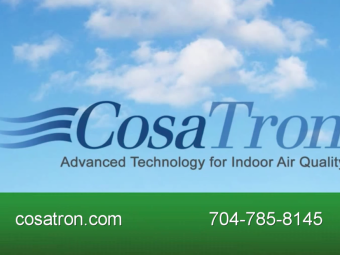Up to 52 percent of indoor air quality problems are the result of insufficient or ineffective ventilation, according to the The National Institute for Occupational Safety and Health (NIOSH). In addition, the outside air we are bringing in can be up to 10x more polluted that the indoor air is. The purpose of mechanical HVAC systems is to bring in outside air and mix it with a percentage of return inside air, condition the air (heat, cool and humidify), and then distribute it to various areas of the building.
Outside air is brought into buildings to dilute contaminants originating within the building. Insufficient outside air intake, from improper system design or mechanical malfunction, or simply intake from already polluted outdoor air, can lead to contaminant buildup inside the space. You have heard it before, 98% of all contaminants in any space are too small to be removed by a standard HVAC system.
Increased outside air requirements is costly. Proper maintenance of mechanical ventilation equipment keeps the system cost-effective and functioning as it was designed. It also prevents the system from becoming a source of contaminants such as mold and dust.
The American Society of Heating, Refrigeration and Air Conditioning Engineers (ASHRAE Standard 62) has specified limits on the amount of outside air that must be brought in and distributed to various parts of buildings. For example, office space requires 20 cu. ft. of outside air per minute per occupant; a designated smoking area requires 60 cu. ft. per minute per occupant.
High levels of carbon dioxide, the gas that we all exhale, is a useful indicator of insufficient outside air intake and ventilation problems especially in buildings such as call centers, arenas, waiting rooms where there are a large number of people working.

